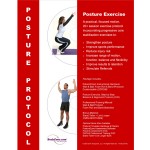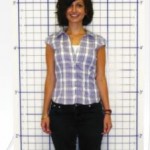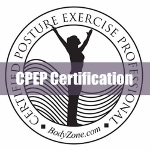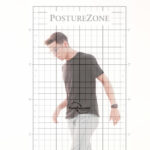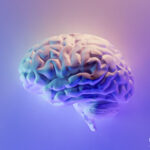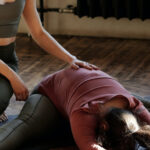Motor Learning in Kids vs Adults – Part I
Motor Learning in Children Compared to Adults – Part I
I am fascinated by posture and motion, which is why a 2021 study in the journal Biology on ballroom dancing really caught my eye. In “Static Body Balance in Children and Expert Adults Ballroom Dancers: Insights from Spectral Analysis of Shifts” (1) Antonio Cicchella makes some important observations about balance, as well as some suggestions to maximize the effectiveness of motor control training for all people, of all ages.
Cicchella’s observation that “Static balance is related to dynamic balance, and can be assessed with greater objectivity” summarizes my longstanding interest in posture. Plus, his conveying that “static balance is the most studied condition of balance in dancers” opened my eyes to a value of dancing for motor control insights.
From my perspective, ballroom dancing is a natural study of the neurologic differences between how adults and children learn to control precise patterns of how they move.
The researchers compared professional adult ballroom dancers with 8-12 year old children who’ve taken lessons 4 days a week for 4 years, and compete in dance competitions. A force platform with sophisticated computer program analyzed patterns of sway and stabilization to measure the relative neurologic weighting of the 3 neurologic inputs of balance – visual, vestibular and proprioceptive.

The Results: Children really do learn differently than adults. When compared to adults, children gave greater weight to the proprioceptive somatic-sensory system. For adults, the vestibular system dominated centralized and fine balance control.
In my opinion, their study also reinforced an observation about motor control, attentional focus and mindfulness training…
How you learn to do anything, is how you learn to do everything.
The study made specific recommendations on adopting balance exercises differently for kids than adults. But to understand the implications, first lets take a step back and ask:
What is being trained when you learn a new neuromusculoskeletal (or NMS) pattern of motion?
Understand this: The NMS system is a single, profoundly integrated system. Its not neuro + muscle + skeletal bundled together. The NMS system is a unified whole, one of which we’re only occasionally somewhat aware.
Millisecond by millisecond, the brain, spinal cord and peripheral nervous system controls how humans and all other mammals move. However, humans are the only mammals that have the cognitive ability to focus awareness and shift from unconscious to conscious motion.
Also, from Physiology 101: Each of the thousands of muscle fibers in a muscle follows the same all-or-none principle as nerve fibers: An individual muscle fiber contracts fully, or not at all. The combination creates cascading spirals of feedback and feedforward. These loops of cause and effect connect to move the body in a kinetic chain, where the effect of an action or position any link affects other links further down (or up) the chain.
When a single muscle contracts the force, angle and direction of the energy is controlled by recruiting different populations of it’s fibers, with each one following the all-or-one principle. Thousands of active muscle fibers work together to generate kinetic energy, which is directed along the kinetic chain.
Punjabi’s model organized the NMS system into 3 subsystems – Active, Passive and Control.
Communicating clearly to the public as well as other professionals is our goal, which is why the StrongPosture® model re-labels this triad as the mechanical subsystems of Contracting muscles and Connecting tissues being controlled by the neurological Control subsystem.
Mechanically, the “musculoskeletal” part of NMS patterns is the precisely integrated sequencing of varying populations of muscle fibers to fully contract and either move, or resist motion.
Within its mechanical range, a single muscle can actively:
- Contract to shorten and move the attached bone(s) to which it’s connected, or
- Resist lengthening to stabilize the joint(s) where the bones are held together.
- A joint’s arc(s) of motion are passively restricted by ligaments and other elements of the connecting subsystem.
- A combination of both, with some fibers shortening and others contracting to resist lengthening
Within their respective functional ranges, all the muscles of the Contracting subsystem work together to move the body by directing the energy of contraction along each joint’s arc(s) of motion. The Connecting subsystem of the kinetic chain is passive, directing energy with leverage of bones and tendons, along with magnification of the compressive forces by fascia and intramuscular sheaths that focus the energy to generate greater force.
 Mechanically, it’s a large but finite system of motors, ropes and pulleys guiding muscular energy. Like water flowing downhill, the mechanics of our motion is kinetic energy flowing down the kinetic chain, following the path of least resistance.
Mechanically, it’s a large but finite system of motors, ropes and pulleys guiding muscular energy. Like water flowing downhill, the mechanics of our motion is kinetic energy flowing down the kinetic chain, following the path of least resistance.
Neurologically is where things gets more complex with the Controlling neuromusculoskeletal subsystem.
We all know muscles strengthen in the way they used. In addition, when nerve pathways are used frequently, they become easier to stimulate, or facilitated to do whatever they’re trained to do.
For motor nerves, trained to move in sync and sequence, or not quite (which is why your golf swing has a hook, or a slice). For sensory nerves, accurately transmitting a message about position, motion… or pain – whether or not the message is true.
Nerves that fire together, wire together.
Performing a motion means directing kinetic energy precisely along the kinetic chain. Training ballroom dance (or any sport) involves focusing attention repetitively to move in desired pattern(s). It’s the moment-by-moment sequence of millions of fibers – muscle and nerve where some populations of muscle fibers contract to move, others contract to stabilize, and most are quiet.
Attentional focus and repetition are the keys to learn new motion patterns. Moment by moment, the nervous system manages the relative weighting of the 3 sources of input:
- The eyes seeing
- The muscles and joints feeling, and
- The vestibular system in the inner ear sensing change in position and acceleration.
The brain and our unconscious reflexes are constantly shifting the perceived relevance of each source of input to guide energy along our kinetic chains.
This ballroom dancing study compared how kids vs adults learn to balance and so guide motion by weighting the relative importance, or weight, of these 3 inputs.
This is about everyone, not just dancers.
We’re all constantly shifting how much to depend upon the input from our visual perception of the horizon with the inner ear’s vestibular input. The brain weighs these two inputs in ways just now becoming understood, and coordinates them with the input of millions of nerve endings in muscles and joints, as well as nerve receptors which feed proprioceptive and kinesthetic information to sense position and motion… and plan our next step.
This is important because how we weight sensory inputs is not just about dancing, or even motion! The experience of pain, mechanical strain and discomfort are profoundly influenced by how the brain weights and processes visual, vestibular and proprioceptive inputs. Techniques to retrain pain perception by up-weighting and down-weighting of sensory inputs is a hot area of study, and will be the topic of a future blog post.
In next week’s article, find out more on the implications of kids vs adults learning differences for training balance in Part II of Motor Learning in Kids vs Adults – From Movement to StrongPosture®.
- At-home patient rehab. 7 Steps to StrongPosture® is the online at-home program for patients that integrates education and exercise designed to blend easily into your workflow. Subscribe to offer the program to your patients & clients >>>
- CE Approved online education. Posture and Balance Assessment, Rehabilitation & Motor Control Exercise >>>
- Complete in-office rehab program. Pro Training Manual, Patient Handouts and more >>>
Add the StrongPosture® program to your practice get the Posture Rehab Exercise Set and enroll in the online CE course. Take your practice to the next level with CPEP® Posture Specialist Certification.


